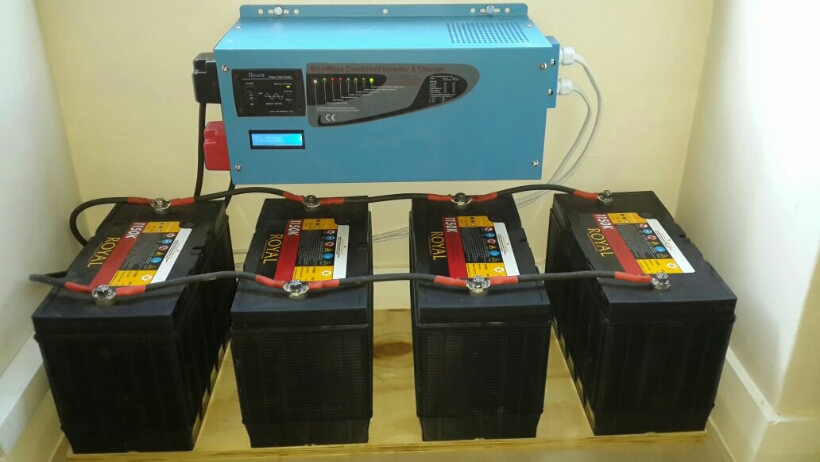Wilkista Akinyi- Junior Programme Officer, Green Energy
Power blackout during a pandemic where many of us are working from home with no stand-by generators as usually provided by most offices can be very frustrating. From a workforce that is used to minimal interruption – to one that must now operate at the mercy of the national grid fully, business is not as usual anymore. On Saturday the 9th May 2020, two countries in East Africa experienced a nationwide outage that lasted for at least three hours. In Kenya, the disturbance was linked to a fault in the transmission network. In Uganda’s case, though the outage was attributed to a nationwide fault in the grid, there had been a notice circulated a day prior by the utility operator of an emergency load shedding in some parts of the country for maintenance purposes. Sharing tips on power backups in response to questions earlier raised by colleagues and friends might be equally useful to the public to cope with planned/unplanned power outages as we work remotely.
A viable solution to outages is to consider investing in power backup systems. However, not many people are aware or informed as to how they can go about this. In this article, I aim to answer some frequently asked questions (FAQs) about power backup solutions. While compiling the article, I had the chance to talk to Titus Koech, the Technical Service Engineer for Middle East and Africa region at JinkoSolar Holding Co., Ltd – global number one manufacturer of Tier 1 solar Photovoltaic (PV) modules. Titus’ insights have been captured in these responses.
FAQs on investing in power backup solutions
- What is a power backup solution and what options are available for homes?
A backup is a device/system that provides instantaneous uninterrupted power supply during a blackout from a stored energy source. Usually, backups are used to power critical loads such as telecommunication devices, computers, servers, and vaccine storage refrigerators during an outage. Existing backup systems include UPS, solar home systems (by companies such as MKOPA solar, d.light Ltd, Pawame Ltd and ENGIE Mobisol which are mostly Pay-as-you-go models), solar backups and inverter battery-based backups. Portable stand-by diesel generators can also be used as backups but are not green sources of energy and would require costly regular maintenance.
For typical home appliances such as lighting, TV, charging and fridges, it may be advisable to use a battery backup solution and you can opt to invest in a solar PV system to charge it, or charge from the mains. The size of your battery bank will largely depend on your budget, the specific loads you wish to connect to the backup and duration of use (anticipated hours of blackout). Typically, residential energy storage requirement in Kenya range from 2400Wh to 19,200Wh with backup hours of between 2 to 6 hours depending on the use.
Most batteries used for backups are either 100Ah, 150Ah and 200Ah in size and depending on the energy storage capacity and voltage you seek. You might buy between 1 to 16 pieces of a given size which will be wired to suit your need. There are different battery technologies currently available including Lithium ion, Lithium ion phosphate, lead acid and capacitor-based storage. The suitability of each depends on several factors such as the number of cycles, warranty, energy density and pricing.
- How much would it cost to invest in a solution for my house?
The cost of backup system is highly dependent on the size which is dictated by the loads that are intended to be served and the duration of the backup. If you want longer hours of backup or wish to power more loads, it would cost more to set up the infrastructure that can meet those needs. The market range in Kenya is typically between Ksh 15,000 (USD 150) to Ksh 500,000 (USD 5,000) depending on the intended use and product quality/brand.
- How do I install my backup system at home?
Depending on the type and size of battery backup you opt to invest in, you may need to engage the services of a qualified electrician to help with the wiring to your consumer unit or distribution board and selection of essential loads that should be powered by the system through load separation in the event of a blackout. However, for small backup solutions such as solar home systems these often come as plug and play systems which you can easily install for yourself.
- Can I easily charge the backup batteries at home?
For inverter-based backup systems, you charge the battery using an inverter charger (a device which converts the DC current from batteries to the AC current used by most appliances at home) or smart chargers – these are directly plugged into a single-phase power supply which is more often what we use at home. It is advisable to charge and keeps the batteries fully charged all the time to be able to utilize the stored energy in the event of a power outage
- What is the product lifetime?
For Lithium-ion batteries, the lifetime is ten years depending on the number of daily charging and discharging cycles. Typically, backup systems can last between five to twelve years in which time the product does not expire but is subjected to degradation. Inverter chargers which are the other system components of battery backups have a product lifetime of between five to ten years. It is advisable to invest in smart battery chargers which help to control the battery charge level to avoid overcharging which reduces the product lifetime and causes damage. For batteries that are not sealed (non-maintenance free), maintenance helps to determine the backup durability.
- Which appliances should I power using my backup?
It is preferable to power low power consuming and efficient household items that have energy efficiency labels approved by Kenya’s energy regulator EPRA. These include LED lights, computers, LED TVs, fridge, phone charging and LED security lights. Avoid high power consuming appliances exceeding 1000W such as electric cookers, some microwaves, electric heaters, and iron boxes. EPRA-licensed technicians should be able to advise on what loads your system can accommodate and best practices to reliability and durability of your backup system. It is recommended to adhere to this advisory.
- Is there product warranty?
As for most other electronic appliances purchased from authorized dealers, there should be an accompanying warranty for at least one year. Bear in mind that warranty terms and conditions usually apply to manufacturer defects only. Self-induced defects such as wrong use of your system will not be covered by your warranty. This can include intentional overload by using appliances that are not accommodated by your system, or use of poor quality chargers and/or avoiding the use of a smart charge controllers hence causing damage to your batteries. Most battery manufacturers offer product warranties of between two to five years, whereas solar PV module suppliers give product warranties with guarantee of between ten to fifteen years.
I highly encourage that for a start, invest in a good quality power bank which can, at the very least, keep your smartphone up and running to allow easy access to your emails and urgent online meetings. Good news is that there now exist higher energy storage capacity portable power banks such as Lenovo 14000 mAh and Samsung 40000 mAh which can be used to charge laptops. This way, you do not lose touch with your work when a blackout strikes. For those who shop online, I would advise against random purchase of appliances before assessing the product quality, performance, availability, and delivery schedule. More importantly, let us adjust our work-at-home routines in anticipation of plausible insecurity in electricity supply should we find ourselves in it.




